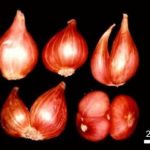2019-01-28 アメリカ合衆国・マサチューセッツ工科大学(MIT)
(Converting Wi-Fi signals to electricity with new 2-D materials)

・ MIT が、Wi-Fi 信号のエネルギーを電気に変換する、フレキシブルな新型レクテナを開発。
・ 同レクテナでは、原子 3 個分の薄さの 2D 材料である二硫化モリブデン(MoS2)を整流器として利用。同整流器は、特定の化学物質に触れると原子の配列が変わって半導体から金属へと相転移する MoS2 の挙動を活用する、原子薄の超高速ショットキーダイオード構造を有する。
・ レクテナの主要な構成部品である整流器には、従来、シリコンやガリウム砒素が使用されているが、硬い物質であることと、大面積での使用ではコストが跳ね上がることが課題。フレキシブルなレクテナは他でも開発されているが、作動が低周波数帯域に限られ、携帯電話や Wi-Fi信号の多くが使用する GHz 周波数帯域での信号捕獲と変換が不可能。
・ 新レクテナでは、現在最高水準のフレキシブルな整流器に比して寄生容量が一桁低いため、最大で 10GHz のワイヤレス信号のより高速な捕獲・変換が可能。一般的な電子機器で使用される Wi-Fi やセルラーLTE 等のほぼ全ての無線周波数帯域の電力変換を可能にする、完全なフレキシブルデバイスを実現する設計。
・ 同レクテナのフレキシブルな無線(RF)アンテナが、Wi-Fi 信号を含む電磁波を AC 波形として捕獲した後、MoS2 の整流装置が DC 電圧に変換する。
・ このように、電池を持たないデバイスがユビキタスな Wi-Fi 信号をパッシブに捕獲して有用な DC 電力に変換する。さらに、フレキシブルな同レクテナは、ロール・ツー・ロールプロセスにより大面積での製造が可能。
・ 同新技術の利用が期待できるアプリケーションは、フレキシブルなウェアラブルエレクトロニクスや医療デバイス、IoT センサー等。約 150μW の標準的な Wi-Fi 信号レベルでは、約 40μW の発電を実験で確認。これは、LED の点灯やシリコンチップの駆動に充分な電力。
・ また、インプラント用医療デバイスのデータ通信の電源としての利用も可能。身体内部の健康状態のデータをコンピューターに送信して診断する内服用ピルの開発も進めている。
・ MoS2 ベースのレクテナでは、標準的な Wi-Fi 出力レベルにて最大出力効率が約 30%。硬いシリコンやガリウム砒素ベースのレクテナでは約 50~60%。今後はより複雑なシステムの構築と出力効率の向上を目指す。
・ 本研究は、MIT International Science and Technology Initiatives (MISTI)を通じたマドリード工科大学との協力により実施。また、Institute for Soldier Nanotechnologies、米国陸軍研究所、米国科学財団 (NSF)の Center for Integrated Quantum Materials および米国空軍研究所が一部支援した。
URL: http://news.mit.edu/2019/converting-wi-fi-signals-electricity-0128
(関連情報) Nature 掲載論文(アブストラクトのみ:全文は有料)
Two-dimensional MoS2-enabled flexible rectenna for Wi-Fi-band wireless energy harvesting
URL: https://www.nature.com/articles/s41586-019-0892-1
<NEDO海外技術情報より>
Abstract
The mechanical and electronic properties of two-dimensional materials make them promising for use in flexible electronics1,2,3. Their atomic thickness and large-scale synthesis capability could enable the development of ‘smart skin’1,3,4,5, which could transform ordinary objects into an intelligent distributed sensor network6. However, although many important components of such a distributed electronic system have already been demonstrated (for example, transistors, sensors and memory devices based on two-dimensional materials1,2,4,7), an efficient, flexible and always-on energy-harvesting solution, which is indispensable for self-powered systems, is still missing. Electromagnetic radiation from Wi-Fi systems operating at 2.4 and 5.9 gigahertz8 is becoming increasingly ubiquitous and would be ideal to harvest for powering future distributed electronics. However, the high frequencies used for Wi-Fi communications have remained elusive to radiofrequency harvesters (that is, rectennas) made of flexible semiconductors owing to their limited transport properties9,10,11,12. Here we demonstrate an atomically thin and flexible rectenna based on a MoS2 semiconducting–metallic-phase heterojunction with a cutoff frequency of 10 gigahertz, which represents an improvement in speed of roughly one order of magnitude compared with current state-of-the-art flexible rectifiers9,10,11,12. This flexible MoS2-based rectifier operates up to the X-band8 (8 to 12 gigahertz) and covers most of the unlicensed industrial, scientific and medical radio band, including the Wi-Fi channels. By integrating the ultrafast MoS2 rectifier with a flexible Wi-Fi-band antenna, we fabricate a fully flexible and integrated rectenna that achieves wireless energy harvesting of electromagnetic radiation in the Wi-Fi band with zero external bias (battery-free). Moreover, our MoS2 rectifier acts as a flexible mixer, realizing frequency conversion beyond 10 gigahertz. This work provides a universal energy-harvesting building block that can be integrated with various flexible electronic systems.



